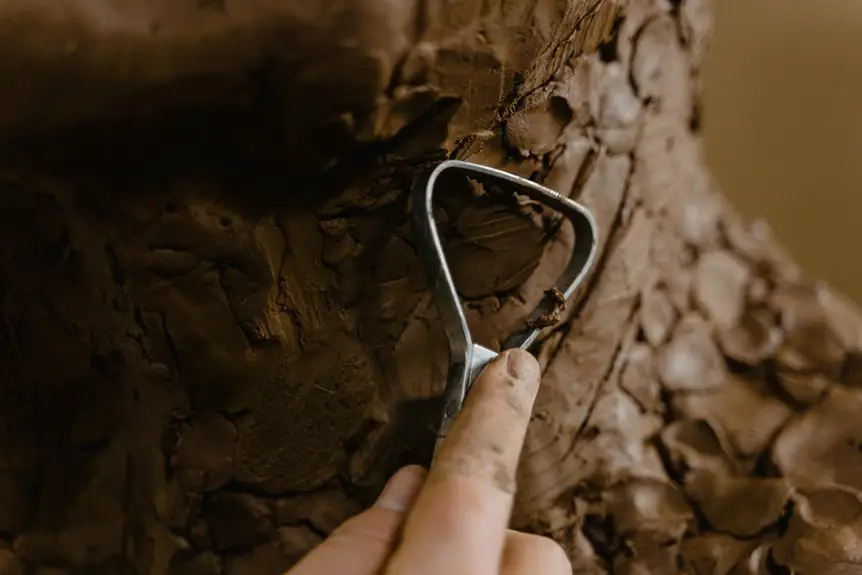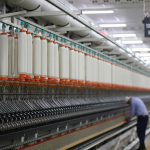You rely on Kevlar every day, thanks to chemist Stephanie Kwolek’s 1965 breakthrough at DuPont when she spotted a unique polymer that led to this strong, lightweight fiber. Originally used in tires and ropes, Kevlar quickly became essential for bulletproof vests and protective gear, saving lives worldwide. Its heat resistance and durability also revolutionized aerospace and industry. As Kevlar evolves toward even lighter, sustainable uses, you’ll find even more fascinating ways this fiber protects and innovates.
Table of Contents
Key Takeaways
- Kevlar was discovered in 1965 by chemist Stephanie Kwolek while developing lightweight, strong fibers at DuPont.
- Early uses included tire reinforcement and heat-resistant ropes, expanding into aerospace and automotive protective gear.
- Kevlar revolutionized personal protection by enabling lightweight, flexible body armor that stops bullets and shrapnel.
- Aerospace industries adopted Kevlar for lightweight, durable aircraft components and heat-resistant cables.
- Ongoing innovations focus on lighter, stronger, eco-friendly Kevlar composites and smart, adaptive protective materials.
The Discovery of Kevlar
Although you mightn’t realize it, Kevlar was discovered by a chemist named Stephanie Kwolek in 1965 while she was working at DuPont.
You can imagine her surprise when, during an experiment to create a lightweight yet strong fiber, she noticed an unusual, cloudy liquid polymer solution. Instead of discarding it, she insisted on testing further.
When spun into fibers, these proved to be incredibly strong and durable—much more so than existing materials. You’d appreciate that her curiosity and persistence led to this breakthrough.
By recognizing the potential of this polymer, she laid the foundation for a material that would later revolutionize safety equipment.
Thanks to Kwolek’s dedication, what started as a lab experiment became a groundbreaking invention with far-reaching impact.
Early Applications and Development
Once Kevlar’s unique strength was confirmed, researchers quickly explored its potential uses across various industries.
You’d find Kevlar initially applied in tire reinforcement and racing tires, where durability and lightweight properties were essential. Its resistance to heat and cutting made it ideal for ropes, cables, and protective gear in aerospace and automotive sectors.
You’d also see it in sporting goods like helmets and sails, enhancing safety without adding bulk. Early development involved refining manufacturing processes to improve fiber consistency and scalability.
Kevlar’s Role in Personal Protection
Kevlar has saved countless lives by revolutionizing personal protection gear. When you wear Kevlar-based body armor, you get lightweight, flexible protection that stops bullets and shrapnel. First responders, military personnel, and law enforcement rely on Kevlar to keep them safe in dangerous situations. It also protects motorcyclists and athletes from injuries during crashes. Kevlar’s strength-to-weight ratio means you don’t have to sacrifice mobility for safety.
| Protection Type | Kevlar Benefit |
|---|---|
| Bulletproof vests | Stops bullets, lightweight |
| Helmets | Impact resistance |
| Gloves | Cut and abrasion resistance |
| Motorcycle gear | Crash protection |
| Sports equipment | Injury prevention |
You can trust Kevlar to provide reliable defense when it matters most.
Innovations in Aerospace and Industry
When you look at modern aerospace and industrial applications, you’ll find Kevlar playing a vital role in enhancing performance and safety. You’ll see it used in aircraft components where weight reduction and strength are essential, helping planes become more fuel-efficient without compromising durability.
In industrial settings, Kevlar-reinforced hoses and cables resist wear and extreme conditions, extending their lifespan and reliability. You can also find Kevlar in cutting-edge composites that protect equipment from impact and abrasion.
Its heat resistance lets you rely on it in environments where other materials would fail. Whether it’s reinforcing rotor blades or safeguarding important machinery, Kevlar’s unique properties keep operations running smoothly and safely, showing just how versatile this material has become beyond personal protection gear.
The Future of Kevlar Technology
As industries push for lighter, stronger, and more sustainable materials, you’ll see Kevlar technology evolving to meet these demands. Researchers are developing new Kevlar composites that enhance durability while reducing weight, making them ideal for everything from wearable armor to automotive parts.
You’ll also notice advances in eco-friendly production methods, minimizing environmental impact without sacrificing performance. In healthcare, Kevlar’s biocompatibility opens doors for innovative medical devices and implants that require strength and flexibility.
Plus, the integration of Kevlar with smart materials means future applications could include self-healing fabrics and adaptive protective gear. By embracing these innovations, you’ll benefit from Kevlar’s expanding role in safety, sustainability, and technology, proving this versatile material is far from reaching its full potential.
Frequently Asked Questions
How Is Kevlar Recycled or Disposed of After Use?
When Kevlar’s life ends, you can’t just toss it in the trash like old clothes. You’ll find specialized recycling programs that break it down or repurpose it, turning tough fibers into new, useful materials instead of waste.
What Companies Currently Manufacture Kevlar Products?
You’ll find Kevlar products made by companies like DuPont, which invented it, as well as firms like Honeywell and Teijin. They produce everything from body armor to industrial gear, ensuring high-quality, durable materials for your needs.
Are There Any Known Health Risks From Handling Kevlar?
Worried Kevlar will turn you into a superhero with itchy powers? Don’t sweat it! Handling Kevlar’s generally safe, but those tiny fibers might irritate your skin or lungs if you’re not careful. Wear protection!
How Does Kevlar Compare Cost-Wise to Other Materials?
You’ll find Kevlar is generally more expensive than typical fabrics due to its strength and durability. However, its cost-effectiveness shines long-term, especially when protection and longevity outweigh initial investment concerns.
Can Kevlar Be Dyed or Colored for Fashion Use?
You won’t believe it, but Kevlar’s super tough fibers don’t take dye well! You can’t just splash colors on it like cotton, so for fashion, you’ll need special coatings or colored blends to get the look you want.
- The Use of Nonwovens in Construction and Civil Engineering - July 11, 2025
- The Use of Nonwovens in Construction and Civil Engineering - July 11, 2025
- The Use of Nonwovens in Construction and Civil Engineering - July 11, 2025







